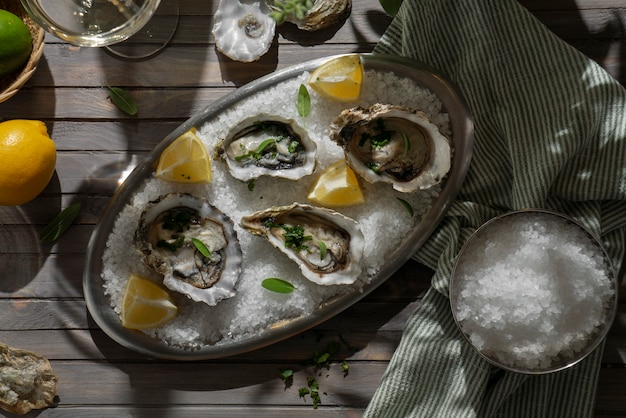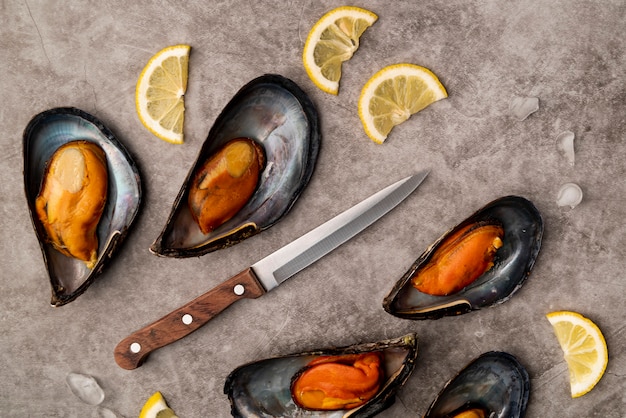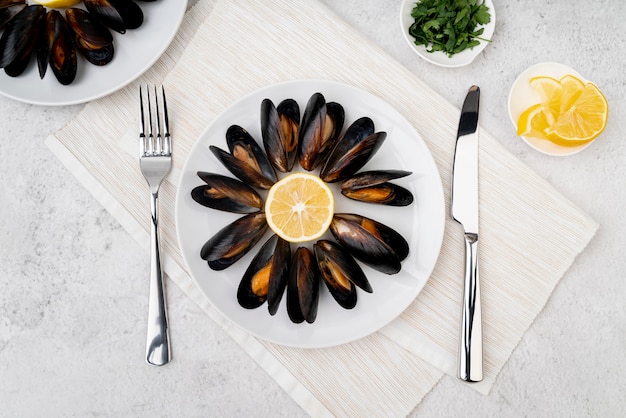There's something truly magical about cooking clams. The anticipation, the aroma, the promise of juicy, briny perfection - it's enough to make any cook's heart sing. But let's be honest, there's also a touch of anxiety. You're trying to nail that perfect cooking time, making sure those shells open just right, and not ending up with tough, chewy, or worse, undercooked clams.
Fear not, my fellow clam-lovers! Over the years, I've spent countless hours experimenting, refining, and perfecting my clam-cooking technique. And today, I'm ready to share my secrets with you, guiding you towards a world of clam-tastic culinary triumphs. So grab your apron, gather your ingredients, and let's embark on this clam-cooking journey together.
Part 1: Clam Selection

1.1. The Freshness Factor: It's All About the First Impression
First things first, we need the perfect clam cast for our culinary masterpiece. Remember, you're not just buying a food, you're buying a living creature. And like any living creature, they have their own story to tell. The first step is checking for freshness. A good clam should be tightly closed, with a shell free from cracks or chips.
Don't hesitate to give them a little tap – a freshly caught clam will snap shut quickly. A clam that doesn’t close, or worse, stays open, is a sign of its journey nearing its end. Plus, a clam with an unpleasant fishy smell or a slimy feel is a definite no-go. You want your clams to be vibrant, alive, and ready to transform into a delicious meal.
1.2. Variety is the Spice of Life: A World of Clams Awaits
The world of clams is vast and diverse, each offering a unique flavour and texture. You've got the classic little neck clams, known for their delicate size and sweet, briny flavour, perfect for steaming or adding to a creamy chowder. Then there are the larger, meatier quahogs, ideal for grilling, stuffing, or simply enjoying on their own.
But don’t stop there. There are countless varieties to explore, from the plump cherrystone clams, offering a more robust flavour, to the sweet and tender Ipswich clams, perfect for grilling. And if you're feeling adventurous, you could even try the delicate razor clams, known for their long, thin shells and delicate flavour.
My personal favourite? The littleneck clam. It's small, delicate, and boasts a sweet, briny flavour that's simply divine. But don't be afraid to experiment. Trying a new clam variety is a culinary adventure waiting to happen!
Part 2: Preparation

2.1. The Cleansing Ritual: A Fresh Start for Your Clams
Before we get to the cooking, our clams need a little spa treatment to ensure they're in top form. Think of it as a fresh start for these little ocean dwellers. First, give them a thorough rinse under cold running water to remove any sand or debris.
Then, we embark on the soaking ritual. This is where the magic happens! Place your clams in a large bowl filled with cold water, adding a few tablespoons of salt. This simple trick encourages the clams to purge any grit or sand they might be carrying. Let them soak for at least 30 minutes, or up to an hour, allowing them to release any hidden treasures.
2.2. Don't Forget the Scrub: A Final Touche of Cleanliness
After their cleansing soak, give those clams a final scrub with a stiff brush to remove any lingering debris. Think of it as a final polish before they make their grand entrance onto your plate. And if you're feeling particularly meticulous, you can even use a small knife to gently scrape away any stubborn bits.
Remember, the goal is to remove any unwanted debris without damaging the clam's delicate flesh. A little extra effort now will result in a much more enjoyable eating experience later.
Part 3: Cooking Methods

3.1. The Art of Steaming: Simple Elegance
For a classic, simple preparation, steaming is the ultimate way to showcase the clams' natural flavour. It's quick, easy, and allows the clams to retain their juicy essence. Place a steamer basket in a large pot, add a cup of water, and bring it to a rolling boil. Then, carefully place your clams in the steamer basket, ensuring they're not overcrowded.
Imagine a cosy little clam party! They should have enough space to mingle and breathe. Cover the pot and let them steam for about 5-7 minutes, or until the shells open. This is the signal that they're ready to be enjoyed.
Once the clams are cooked, carefully remove them from the pot and discard any that remain closed. It's a sign they might not have been the freshest. If you're using littlenecks, you can often pop them out of their shells with a fork. Larger clams might require a little more effort, but the reward is worth it.
3.2. The Allure of Sauteing: A Symphony of Flavours
For a more flavorful adventure, sauteing is a delicious option. Heat some olive oil in a large skillet over medium heat. Add garlic, shallots, and your favourite herbs, sauteing until they release their fragrant aromas. Then, add the clams and cook, stirring occasionally, until they open, about 5-7 minutes.
And let's not forget the wine! A splash of white wine adds a beautiful depth of flavour to the dish. For a citrusy kick, a squeeze of lemon juice or a sprinkle of red pepper flakes adds a touch of excitement to the party.
3.3. The Charisma of Grilling: Smoky Delight
For a truly delicious, smoky flavour, grilling is the ultimate way to elevate your clam experience. Heat your grill to medium-high heat and lightly brush the grates with oil. This prevents sticking and ensures your clams cook evenly.
Place the clams directly on the grill, close the lid, and cook for about 5-7 minutes, turning them halfway through. Keep an eye on them, as grilling time can vary depending on the heat of your grill. Once the shells open, they're ready to be devoured!
Part 4: Cooking Time: The Clam-tastic Countdown
Now, here's where things get a little tricky. Cooking time can vary depending on the size of the clams and the cooking method you choose. Smaller clams cook faster than larger ones, and dry heat methods, like grilling, can cook them faster than steaming.
As a general rule, littlenecks will take about 5-7 minutes to steam or saute, while larger clams like quahogs might need a little longer. Always remember, these are just guidelines. The real test lies in the clams themselves.
4.1. The "Open Shell" Test: A Sign of Culinary Success
The best indicator of whether your clams are cooked is the shell. Once the shells have opened, they're ready to eat. The steam or heat has done its job, allowing the clams to reach their culinary peak.
4.2. The "No-Go" Clam: A Sign to Let Go
Sadly, not all clams will make it to the plate. If you find a clam that remains closed after the recommended cooking time, discard it immediately. It's probably not fresh or wasn't handled properly.
Remember, it's better to err on the side of caution. Discarding a clam that might not be safe is a small price to pay for the peace of mind knowing you're enjoying a delicious and safe meal.
Part 5: Serving Suggestions: A Clam-tastic Feast Awaits
Now that your clams are cooked to perfection, it's time to get creative with your culinary presentation. Here are a few ideas to get your taste buds tingling:
5.1. Classic Clam Chowder: A Creamy comfort food
Ah, clam chowder. A classic comfort food that's perfect for a chilly day. Simply add your cooked clams to a pot of creamy broth with potatoes, onions, and your favourite herbs. Simmer until the potatoes are tender, and then serve warm with a sprinkle of chopped parsley. It's a comforting hug in a bowl.
5.2. Seafood Pasta: A Lighter, More Elegant Option
For a lighter, more elegant dish, try adding cooked clams to your favourite pasta dish. A simple pasta with garlic, olive oil, and fresh parsley is all you need to let the clams shine.
Remember, the clams should be the star of the show, so keep the other ingredients simple and let their delicate flavour shine through.
5.3. Clam Pizza: A Delicious Twist on a Classic
Who says pizza has to be just pepperoni and cheese? Try topping your next pizza with clams, garlic, and a sprinkle of fresh oregano. It's a delicious and unexpected twist on the classic pizza.
The combination of the briny clams, the pungent garlic, and the aromatic oregano creates a symphony of flavours that will have you coming back for more.
Part 6: Storage: Keeping Your Clams Fresh and Ready
If you're not going to cook your clams right away, it's important to store them properly. You want to keep them fresh and vibrant, ready for your next clam culinary adventure.
6.1. The Cold Treatment: A Clam's Favourite Place
Keep your clams in the refrigerator, stored in a bowl of cold saltwater. Make sure the water covers the clams completely, and change it every few hours. This will keep them fresh and juicy for up to a day.
Imagine those clams in their little watery oasis, happy and hydrated, awaiting their culinary destiny.
6.2. Freezing for Later: A Future Clam-tastic Feast
You can also freeze clams for later use. First, steam them until the shells open, then remove them from the shells and discard the shells. Place the clams in a freezer-safe bag and freeze for up to 3 months.
Frozen clams are great for adding to soups, stews, or pasta dishes. They'll retain their flavour and texture, allowing you to enjoy the taste of fresh clams whenever you desire.
Part 7: Clam Care Tips: Respecting Your Culinary Cast
Remember, clams are living creatures. Treat them with respect, and they'll reward you with delicious meals. A little bit of knowledge can go a long way in ensuring your clam experience is both delicious and enjoyable.
7.1. The "Alive" Factor: Respecting the Clam's Life
Always keep your clams in a cool, moist environment, and don't let them dry out. They're delicate creatures, and they need a little TLC to stay fresh and happy.
7.2. The "Less is More" Rule: Don't Overdo It
Don't overcook your clams! They'll become tough and rubbery if you cook them for too long. They're meant to be tender and juicy, not tough and chewy.
7.3. The "Freshness Test": Always Double Check
Always check for signs of freshness before you cook your clams. If you find any that are open, have a fishy odour, or are cracked, discard them. It's better to be safe than sorry when it comes to food safety.
Part 8: FAQs: Unveiling the Clam Mysteries
8.1. How do I know if clams are cooked?
The best indicator of whether your clams are cooked is the shell. Once the shells have opened, they're ready to eat. If you're unsure, you can always gently poke the clam with a fork. If it's firm and cooked through, you're good to go.
8.2. Can I eat clams that are still closed?
No! If a clam remains closed after the recommended cooking time, discard it immediately. It's probably not fresh or wasn't handled properly. It's better to be safe than sorry, and a closed clam is a sign that it might not be safe to eat.
8.3. What's the best way to clean clams?
First, rinse the clams under cold running water to remove any sand or debris. Then, soak them in a large bowl of cold saltwater for at least 30 minutes, or up to an hour. This will help them purge any grit or sand they might be carrying. Finally, scrub them with a stiff brush to remove any lingering debris.
8.4. What's the difference between littlenecks and quahogs?
Littlenecks are smaller and more delicate than quahogs. They have a sweet, briny flavour that's perfect for steaming or chowder. Quahogs are larger and meatier, making them ideal for grilling or stuffing.
Ultimately, the choice between littlenecks and quahogs comes down to personal preference and the desired flavour and texture. Both types offer a delicious and satisfying clam experience.
8.5. Can I freeze clams?
Yes, you can freeze clams for later use. First, steam them until the shells open, then remove them from the shells and discard the shells. Place the clams in a freezer-safe bag and freeze for up to 3 months.
Frozen clams are great for adding to soups, stews, or pasta dishes. They'll retain their flavour and texture, allowing you to enjoy the taste of fresh clams whenever you desire.
Part 9: The Clam Connoisseur's Toolkit: Essential Tools for Clam-tastic Adventures
Now, let's talk about the essential tools for your clam-cooking arsenal. These tools will help you create clam-tastic meals with ease and confidence.
9.1. The Steamer: A Culinary Essential for Clam Perfection
A steamer basket is a must-have for any clam enthusiast. It allows the steam to circulate evenly, ensuring your clams cook perfectly. You'll be amazed at the difference a good steamer basket can make in the tenderness and flavour of your clams.
9.2. The Skillet: A Versatile Tool for Sauteing Delights
A large skillet is essential for sauteing clams. Choose one with high sides to prevent any splattering. You want to contain the flavours and aromas as those clams release their delicious essence.
9.3. The Grill: A Smoky Journey for Your Clams
A grill is the ultimate tool for adding a smoky flavour to your clams. If you don't have a grill, you can use a grill pan on the stovetop.
The smoky char adds a depth of flavour that's simply irresistible. It's a taste of the outdoors, right on your dinner table.
9.4. The Tongs: Safe and Efficient Clam Handling
A pair of tongs is essential for handling hot clams. They're also useful for removing the clams from the pot or skillet. You'll be able to safely manoeuvre those hot clams without burning your fingers.
9.5. The Knife: A Versatile Tool for Clam Preparation
A small knife can be helpful for scraping away any stubborn debris from your clams. It's also useful for prying open larger clams.
A good knife is a valuable tool in the kitchen, and for clam cooking, it can be particularly helpful.
Part 10: Clam cooking tips: Mastering the Art of Clam-tastic Meals
Finally, here are a few tips to help you cook the perfect clams, turning your culinary creations into clam-tastic masterpieces.
10.1. Don't Overcrowd the Pot: Space is Key for Clam Perfection
Make sure the clams have plenty of room to breathe in the pot or skillet. If they're overcrowded, they won't cook evenly.
Give those clams a little elbow room, and they'll reward you with tender, juicy perfection.
10.2. Use Fresh Herbs and Garlic: Adding a Touch of Aromatic Magic
Fresh herbs and garlic really enhance the flavour of clams. Don't be afraid to experiment with different combinations.
Imagine a mix of basil, oregano, thyme, or parsley, combined with the earthy flavour of garlic. The possibilities are endless, creating a symphony of aromas that will tantalise your senses.
10.3. Add a Splash of White Wine: Elevating the Flavour Profile
A splash of white wine adds a lovely depth of flavour to clams. Use a dry white wine, such as Sauvignon Blanc or Pinot Grigio.
The wine enhances the natural briny flavour of the clams, creating a more complex and nuanced taste experience.
10.4. Don't Overcook Them: Preserving the Delicate Tenderness
Clams are delicate creatures. Overcook them, and they'll become tough and rubbery.
Remember, you want your clams to be tender and juicy, not tough and chewy.
10.5. Enjoy!
The best part of cooking clams is enjoying them! Serve them with your favourite sides and let the flavour transport you to the seaside.
Enjoy the fresh taste of the ocean, the juicy texture of the clams, and the satisfying aroma of a perfectly cooked meal.
And remember, with a little knowledge and practice, you can become a clam-cooking maestro, creating clam-tastic dishes that will impress even the most discerning palate.
Everyone is watching

Corn on the Cob: The Ultimate Guide to Perfectly Cooked Ears
Healthy MealsAh, corn on the cob. Just the name evokes images of sunny days, barbecues, and that sweet, juicy flavour that ...

Perfect Pork Roast Oven Cooking Time: A Guide to Delicious Results
Healthy MealsThere's something truly satisfying about a perfectly roasted pork. The aroma alone is enough to make your mout...

Scallops: The Ultimate Guide to Perfect Cooking
Healthy MealsAh, scallops. Those delicate, sweet, and utterly delicious morsels of the sea. They hold a special place in my...

Ham Cooking Time: How Long to Bake, Smoke, or Boil a Delicious Ham
Healthy MealsAh, ham. It's a classic, isn't it? A real crowd-pleaser, especially around holidays. And when done right, it'...

Spaghetti Squash: The Ultimate Guide to Cooking and Serving
Healthy MealsRemember that time you saw spaghetti squash at the supermarket, looking all bumpy and strange, and thought, "W...
